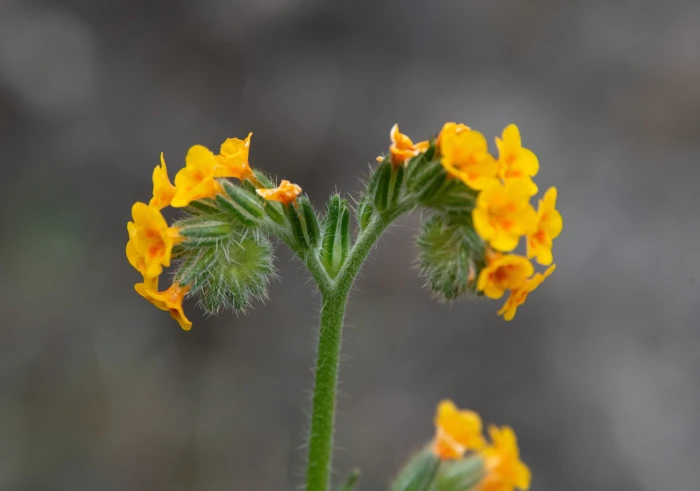Common Fiddleneck
(Amsinckia menziesii)
Common Fiddleneck (Amsinckia menziesii)
/
/

© Don Loarie
CC BY 4.0
Image By:
© Don Loarie
Recorded By:
Copyright:
CC BY 4.0
Copyright Notice:
Photo by: © Don Loarie | License Type: CC BY 4.0 | License URL: http://creativecommons.org/licenses/by/4.0/ | Uploader: dloarie | Publisher: iNaturalist |











Estimated Native Range
Climate Requirements for Aurora, Colorado
| This Plant | Your Site | Plant Suitability for Your Location | ||
|---|---|---|---|---|
| • Precipitation | 3" - 97" | 16" | You should be able to grow this plant with no additional irrigation. | Excellent |
| • High Temp. | 58°F - 111°F | 88°F | Your summer temperatures are normal for this plant. | Excellent |
| • Low Temp. | -28°F - 57°F | 16°F | Your winter temperatures are normal for this plant | Excellent |
This plant should grow very well at your location without additional irrigation.
Summary
Amsinckia menziesii, commonly known as common fiddleneck, is an annual herb native to a variety of habitats in western North America, including grasslands, open woodlands, and disturbed areas from Alaska to Mexico. It typically grows to a height of 1 to 3 feet (30-90 cm) and features coarse, hairy stems and leaves. The plant is named for its inflorescences, which are curled at the top like the head of a fiddle, bearing small, tubular yellow-orange flowers that bloom in spring and early summer. The flowers are arranged in a terminal coil that elongates as the plant matures.
Common fiddleneck is appreciated for its unique flower structure and is often found in wildflower mixes for naturalistic plantings. It is adapted to a range of soil types but prefers well-drained soils and full sun to part shade. While it is drought-tolerant once established, it benefits from moderate water during prolonged dry periods. Gardeners should be cautious, as Amsinckia menziesii can be toxic to livestock if ingested in large quantities. It is also known to be potentially invasive outside its native range, so it is important to consult local guidelines before planting.CC BY-SA 4.0
Common fiddleneck is appreciated for its unique flower structure and is often found in wildflower mixes for naturalistic plantings. It is adapted to a range of soil types but prefers well-drained soils and full sun to part shade. While it is drought-tolerant once established, it benefits from moderate water during prolonged dry periods. Gardeners should be cautious, as Amsinckia menziesii can be toxic to livestock if ingested in large quantities. It is also known to be potentially invasive outside its native range, so it is important to consult local guidelines before planting.CC BY-SA 4.0
Plant Description
- Plant Type: Herb
- Height: 1.5-3 feet
- Width: 1-1.5 feet
- Growth Rate: Rapid
- Flower Color: Orange, Yellow
- Flowering Season: Spring, Summer
- Leaf Retention:
Growth Requirements
- Sun: Full Sun
- Water: Low
- Drainage: Medium, Fast
Common Uses
Bee Garden, Bird Garden, Low Maintenance
Natural Habitat
Native to grasslands, open woodlands, and disturbed areas from Alaska to Mexico
Other Names
Common Names: Fiddleneck, Yellow Burweed, Menzies’ Fiddleneck, Small-Flower Fiddleneck, Harvest Fiddleneck, Orange Fiddleneck, Rancher’s Fireweed
Scientific Names: Amsinckia menziesii, Aminsickia canadensis, Aminsickia foliosa, Aminsickia idahoensis, Aminsickia micrantha, Amsinckia brandegeei, Amsinckia copelandii, Amsinckia douglasiana var. interior, Amsinckia eatonii
GBIF Accepted Name: Amsinckia menziesii